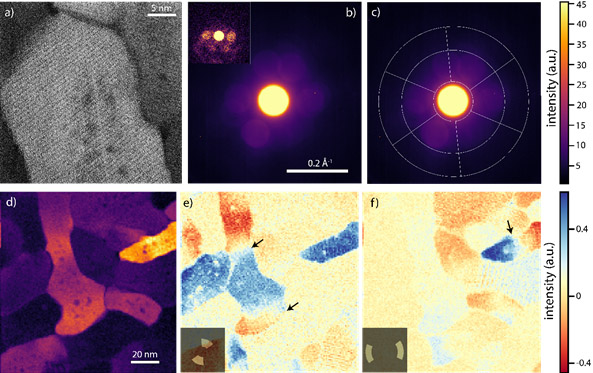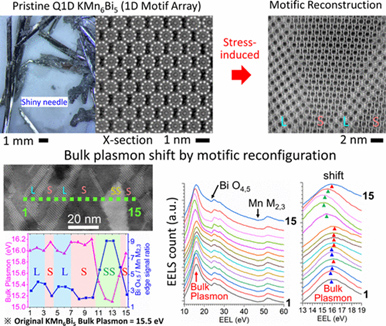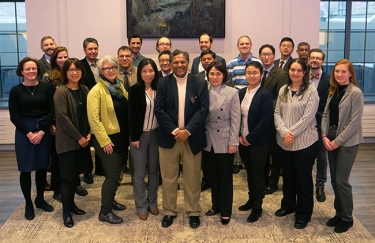Northwestern University's Atomic and Nanoscale Characterization Experimental Center (NUANCE)
About the NUANCE Center
The Northwestern University's Atomic and Nanoscale Characterization Experimental Center (NUANCE) was established by the founding director, Professor Vinayak Dravid during 2001-02. Guided by Professor Dravid’s vision, NUANCE integrates complementary analytical instruments and characterization capabilities at Northwestern University to address emerging opportunities for fabrication and characterization of soft, hard and hybrid materials, structures and devices. NUANCE serves Northwestern and the broader scientific and engineering community and provides invaluable resources to the private sector and public institutions in and around the Midwest. An operationally and fiscally efficient solution to the increasing need for advanced analytical and characterization instrumentation and fabrication tools, NUANCE leverages staff technical expertise to assist and collaborate with researchers in the physical sciences, engineering, and interdisciplinary fields.
For two decades, under the leadership of Professor Dravid, NUANCE has assisted thousands of award-winning faculty, scientists, engineers, medical doctors, and students with the facilities and skills required to carry out collaborative, interdisciplinary world-class nanoscale research. NUANCE actively seeks out partnerships with regional academic, governmental, and industrial agents. These collaborations are often geared towards the translation of nanoscience-based products, processes, and services to the market.
MISSION STATEMENT
NUANCE mission is to provide and continually update state-of-the-art and core analytical characterization instrumentation and fabrication resources, with 24/7 open access, for the Northwestern community and beyond. The word “resource” includes not only mere “instrumentation and access,” but also hands-on training, education, research collaboration, and outreach. NUANCE aspires to be a pro-active and integral part of all scholarly activities related to characterization at Northwestern and beyond.
Facility Highlight: Electron Probe Instrumentation Center (EPIC)
NUANCE provides core analytical characterization instrumentation resources in a collaborative environment, with 24/7 open-access for research and education, for the NU community and beyond. Within NUANCE, the EPIC was the first shared user facility that director Dravid conceived and formed in mid-1990’s to support a broad range of nanoscale science and technology projects, specializing in nanoscale analysis and characterization. EPIC is a multi-user, multi-departmental facility offering continually updated state-of-the-art equipment to qualified researchers from any field and institution. Managed by expert technical staff, EPIC instrument users have access to advanced electron microscopes and related sample preparation instruments. Highlighted amongst transmission electron microscope instruments are:
- Probe corrected JEOL JEM-ARM200CF (S)TEM―equipped with dual JEOL silicon drift detectors (SDD, collection angle of 1.7 sr) for EDS acquisition, a Gatan K2 IS direct detector to capture dynamic phenomena and high-speed spectroscopic data, and a Gatan Quantum Dual-EELS system, amongst others
- JEOL JEM-ARM300F (S)TEM―equipped with BF/ABF/ADF/HAADF detectors for simultaneous imaging, a wide gap pole-piece accommodating numerous in situ holders, and a recently installed K3 IS direct detector to capture dynamic images and diffraction at low electron dose using counting mode
For more information about EPIC please visit their website.
RESEARCH HIGHLIGHTS
Nanostructural features of new generation low-cost ultra-high-strength steels strengthened by dual phases of β-NiAl and M2C carbide
![(a) Low and (b) high magnification bright field scanning TEM (BF-STEM) image showing the general microstructural features of aged AIR0509 steel. (c) [001]M electron diffraction pattern (EDPs) obtained from the circled region indicated in (a). (d) High resolution TEM (HRTEM) image along [001]M direction. (e) and (f) Fast fourier transform (FFT) patterns corresponding to region A and B indicated in (d). (g–l) Elemental maps corresponding to Al–K, Cr–K, Mo-L, Ni–K, Fe–K and Co–K respectively.](/sites/default/files/images/NuAnce/epic-image2.jpg)
Due to the high total detector area and large solid angle, the EDS capability of ARM 200CF is very effective in performing chemical analysis at high spatial resolution and with a high signal-to-noise ratio (SNR). The figure below illustrates the nanostructural analysis of a recently developed novel low-cost ultrahigh strength steel, which is hardened through a dual-phase strengthened mechanism. By conventional image analysis, we cannot observe the structural features of the precipitated phases. However, by means of high spatial resolution EDS analysis, we can clearly visualize the morphological features and the distribution of nanoscale precipitates. (1)
― Dr. Xiaobing Hu, TEM Facility Manager / Research Assistant Professor at NUANCE/MSE
Electron counting 4D STEM studies of electron beam-sensitive human tooth enamel
The Gatan K3 IS coupled with a STEMx system on our JEOL ARM300F were used to capture low-dose 4D STEM diffraction datasets (300 frames per second; dose ~200 e/Å) of human dental enamel, the outer layer component of human teeth. Understanding enamel structural details are of high importance in multiple human health contexts, from understanding enamel formation to the development of its defects. Enamel crystallites, the nanoscale building blocks of human enamel, can be investigated from the micro- to the atomic scale using (S)TEM, however, the sensitivity of this mineral to the electron beam is one of the limiting factors for performing such studies. Although recently atomic-resolution STEM imaging at cryogenic temperatures successfully revealed the apparent coherent atomic structure of crystallites in detail, (2) the field-of-view (FoV) was limited. While the 4D STEM dataset has a ~12x larger FoV, qualitative analysis of the difference in intensity between two opposing virtual segmented detectors reveals that certain individual crystallites display a tilt within the mineral lattice. This suggests that enamel crystallites may not be as coherent as previously thought, which in turn could have important implications on mechanical properties and provide unique insights in crystallite growth during enamel formation.
― Dr. Paul Smeets, Facility Manager FIB&TEM / Research Associate at NUANCE/EPIC

To view a full experiment brief click here.
Unconventional defects within quasi-one-dimensional KMn6Bi5 nanowires

Quasi-1D KMn6Bi5, which comprises ideal 1D nanowire (NW) motifs as an intrinsic part of the crystal structures and its defect mechanism is unusual in that the 1D nanowires slide linearly as a whole rather than conventional atomic displacements. Unconventional motific defects, which lead to two domains of inter-NW spacing larger or smaller than the pristine NW array, are unraveled by aberration-corrected scanning transmission electron microscopy (AC-STEM) images and corresponding multislice image simulation, which can image each atomic column using a sub-Å electron probe. (3) Inter-NW spacings without compositional or structural modulation can shift bulk plasmon energy at two different domains using electron energy loss spectroscopy (EELS) at the low energy range of 0-50 eV, which can measure optical and electronic properties such as the bandgap, local density of states (LDOS) and bulk/surface plasmon excitation.
1) Gao, Y. H., Liu, S. Z., Hu, X. B., Ren, Q. Q., Li, Y., Dravid, V. P., and Wang. C. X. (2019) A novel low cost 2000 MPa grade ultra-high strength steel with balanced strength and toughness. Materials Science and Engineering A, 759, 298-302. https://doi.org/10.1016/j.msea.2019.05.039
2) DeRocher, K. A., Smeets, P. J. M., Goodge, B. H. et al. Chemical gradients in human enamel crystallites. Nature 583, 66–71 (2020). https://doi.org/10.1038/s41586-020-2433-3
3) Jung, H. J., Bao, J. -K., Chung, D. Y., Kanatzidis, M. G., and Dravid, V. P. (2019) Unconventional Defects in a Quasi-One-Dimensional KMN6Bi5. Nano Letters 19(10), 7476-7486. https://doi.org/10.1021/acs.nanolett.9b03237

